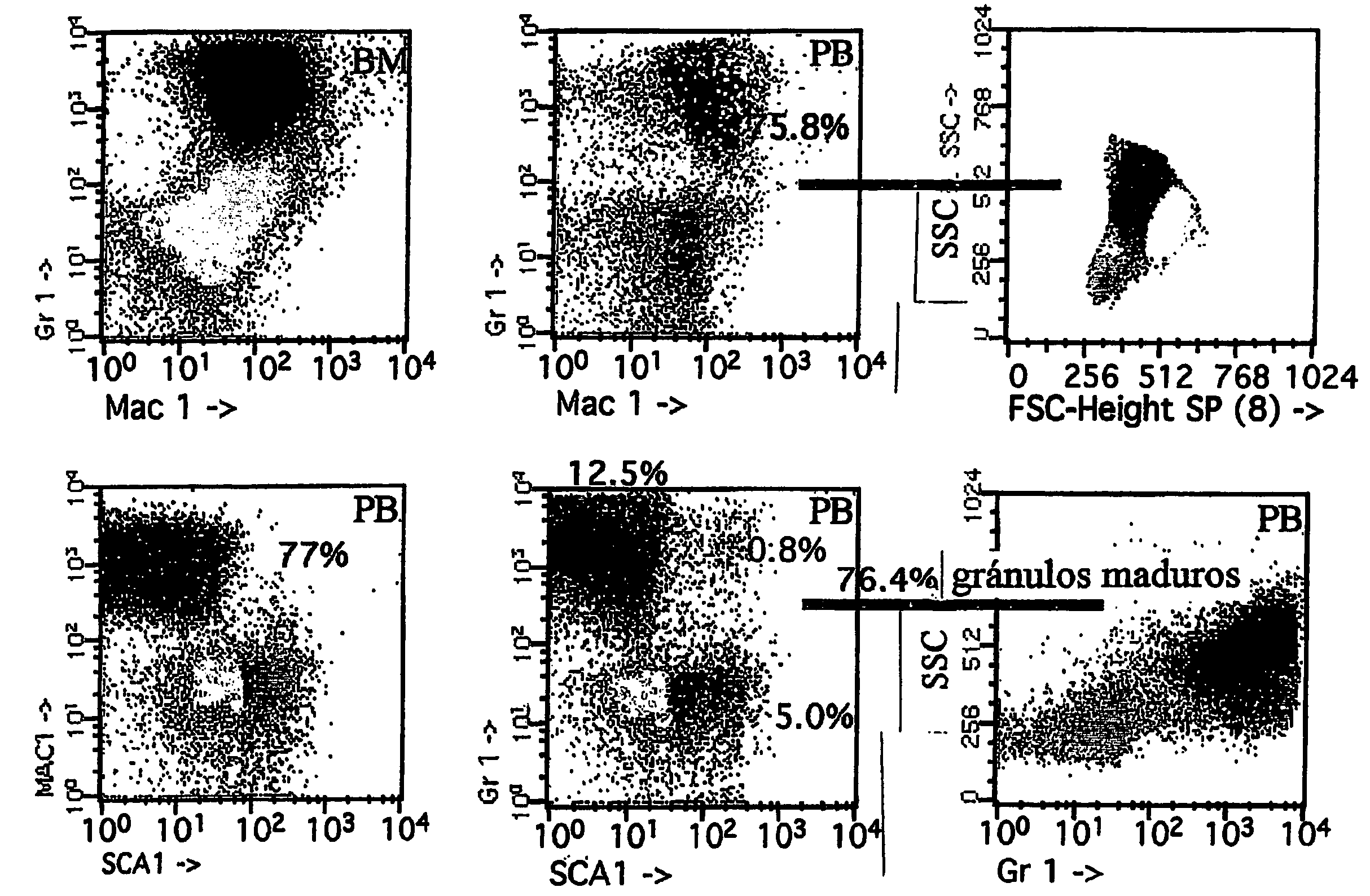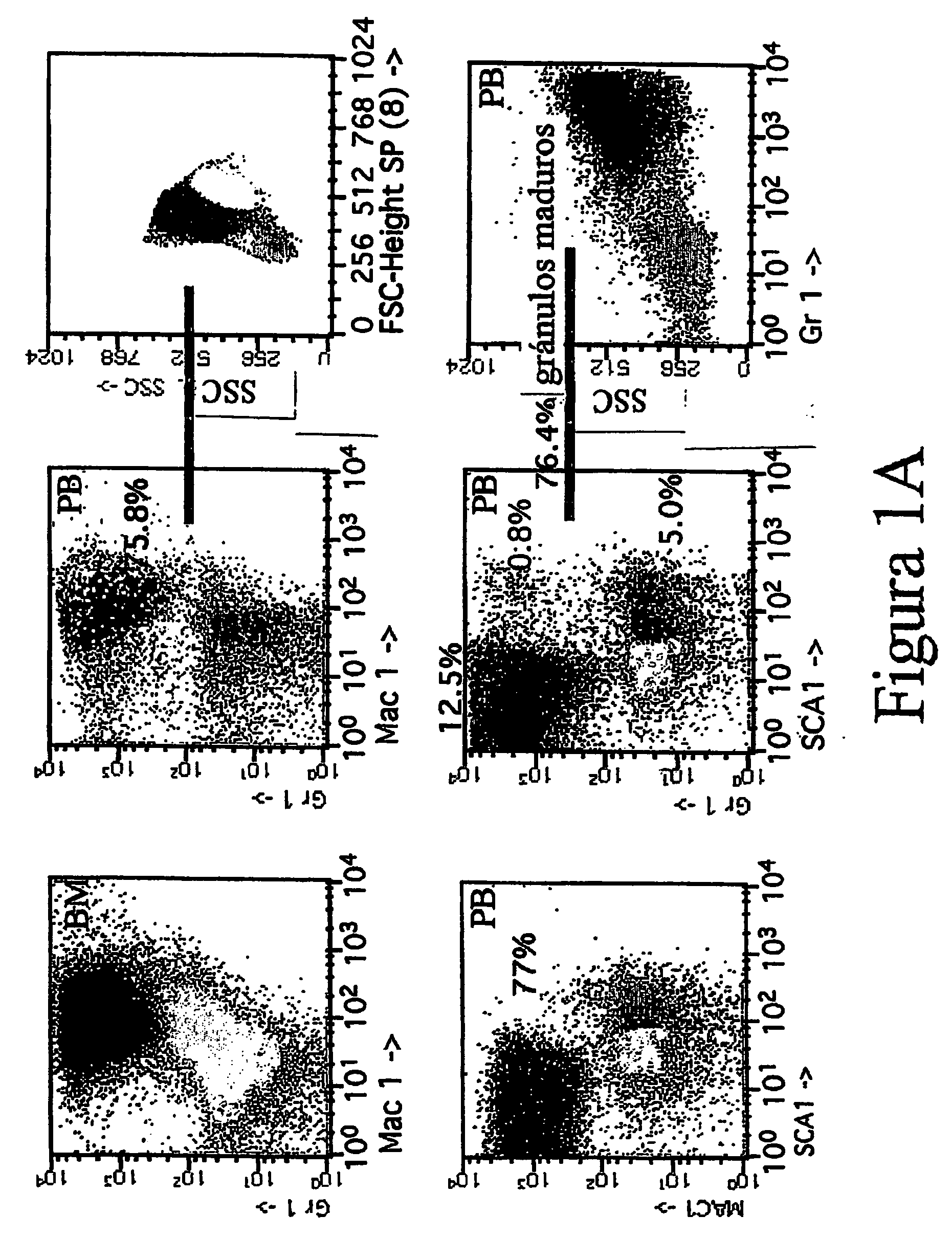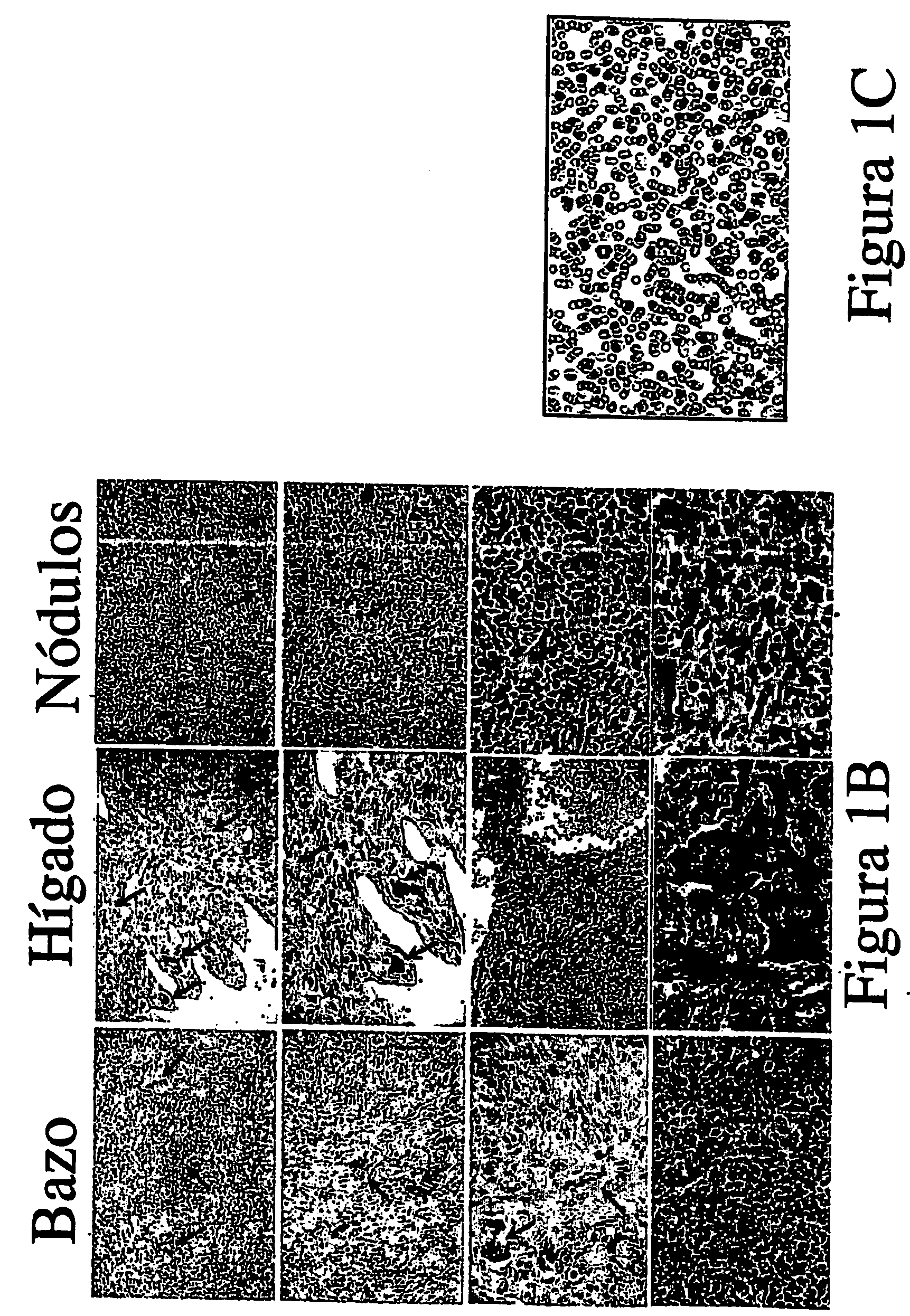Transgenic non-human mammals as models for human pathologies of stem cell origin
a human pathology and stem cell technology, applied in the field of transgenic non-human mammals, can solve the problem of not specifically reproducing human pathologies, and achieve the effects of suppressing or increasing the natural course of each pathology, predicting the efficacy, and increasing the tendency to develop
- Summary
- Abstract
- Description
- Claims
- Application Information
AI Technical Summary
Benefits of technology
Problems solved by technology
Method used
Image
Examples
example 1
Generation of Transgenic Mice
[0095] 1.1 Generation of Sca-1+ BCR-ABLp210 transgenic mice
[0096] In order to examine the direct consequences of the expression of the gene product BCR-ABLP210 (gene fusion that results as a consequence of the t(9:22)(q34;q11) and that is associated with chronic myeloid leukemia) in vivo, the cDNA of the chimeric human protein BCR-ABLP210 was cloned under the control of the promoter pLy-6E.1 of mouse and the fertilized oocytes were injected into C57BL / 6J×CBA mice following the technique described previously in the section on the “Methods”. Two transgenic founder mice (Sca-1+ BCR-ABLP210) showed a capacity to transmit the transgene down the germ cell line. The expression of the transgene was observed in both lines and the progeny multiplied up to level F7 (generation 7). The expression of the transgene was demonstrated by PCR and / or Western blot analysis. Both cell lines showed preferential expression in Sca-1+ cells. The expression of the transgene was...
example 2
Production of Leukemias in Transgenic Mice
[0106] Although in human pathology, the chimeric products of the genes Sca-1+ BCR-ABLp210, Sca-1+ BCR-ABLp190, Sca-1+ Slug, Sca-1+ Snail, Sca-1+ HOX11, Sca-1+ RHOM2 / LMO-2 and Sca-1+ TAL1 are associated with different types of leukemia, specifically, with chronic myeloid leukemia (BCR-ABLP210), B-cell acute lymphoblastic leukemia (BCR-ABLp190) and T-cell acute lymphoblastic leukemias (HOX11, RHOM2 / LMO-2 and TAL1), the current murine models for said leukemias have failed when it comes to reproducing said pathologies consistently [Annu. Rev. Genetics (1997) 31:429-453; Current Genomics (2000), 1: 71-80] due to the difficulty of choosing a promoter for manipulating the expression of the appropriate cell type.
[0107] The detailed analysis of the leukemia cells of different transgenic mice tested (Sca-1+ BCR-ABLP210 (FIGS. 1 and 2), Sca-1+ BCR-ABLp190 (FIG. 3), Sca-1+ HOX11, Sca-1+ RHOM2 / LMO-2 and Sca-1+ TAL1) allowing diagnosis of the correspond...
PUM
| Property | Measurement | Unit |
|---|---|---|
| temperature | aaaaa | aaaaa |
| cell composition | aaaaa | aaaaa |
| size | aaaaa | aaaaa |
Abstract
Description
Claims
Application Information
 Login to View More
Login to View More - R&D
- Intellectual Property
- Life Sciences
- Materials
- Tech Scout
- Unparalleled Data Quality
- Higher Quality Content
- 60% Fewer Hallucinations
Browse by: Latest US Patents, China's latest patents, Technical Efficacy Thesaurus, Application Domain, Technology Topic, Popular Technical Reports.
© 2025 PatSnap. All rights reserved.Legal|Privacy policy|Modern Slavery Act Transparency Statement|Sitemap|About US| Contact US: help@patsnap.com



